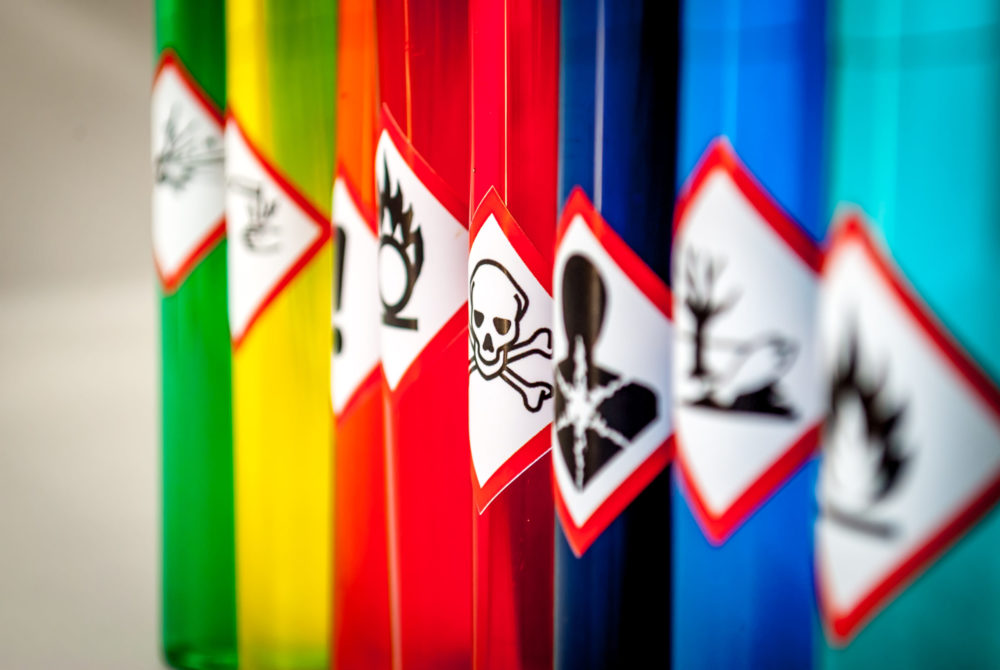Flame Retardant TCEP Poses Unreasonable Risk to Human Health and Environment: EPA
EPA is accepting public comment over the next two months on a draft flame retardant risk evaluation, as part of a determination about whether new restrictions should be placed on the use of TCEP.

Federal regulators are considering a partial ban or other restrictions on the chemical Tris (2-chloroethyl) phosphate (TCEP), which is commonly used as a flame retardant in paints, fabrics, foams, and construction materials, indicating that it poses unreasonable risks to humans and the environment.
The U.S. Environmental Protection Agency (EPA) issued a draft risk evaluation on December 14, indicating it has identified serious health and environmental risks associated with TCEP exposure, and will review public comment and peer review feedback over the next 60 days, before finalizing regulatory actions.
TCEP is a colorless liquid chemical that is primarily used as a flame retardant or plasticizer in aircraft products, laboratory chemicals, fabrics, paints, and coatings. However, EPA officials indicate they have determined TCEP exposure is linked to kidney, neurological, reproductive, and developmental issues, as well as cancer. The chemical substance also poses an unreasonable risks to aquatic animals, including fish, according to the evaluation.
TCEP Risk Evaluation
The EPA report is part of the chemical risk evaluation process under the Toxic Substances Control Act (TSCA), which requires the agency to identify and regulate chemical exposure risks. The process was recently strengthened to allow the agency to make a final determination of whether a chemical presents an unreasonable risk to the public.
The previous EPA administration conducted the first set of chemical risk evaluations in August 2020, including TCEP. However, tribes, community advocates, lawmakers, and even the EPA’s scientific advisors criticized the findings, as they failed to examine TCEP exposure on fish species that are part of tribal nations’ traditional diets, and failed to include airborne exposure near factories using the chemical, among several other factors.
The new TCEP risk evaluation submitted by the current EPA administration includes the additional exposure factors that were not previously considered. It is the first of 20 draft chemical risk analyses the EPA expects to release over the next year.

Learn More About
Exposure to firefighting foam chemicals may result in an increased risk of cancer for firefighters, military and airport personnel.
Learn More About this Lawsuit SEE IF YOU QUALIFY FOR COMPENSATIONThe EPA’s conclusions could potentially restrict the use of TCEP to make certain materials, such as paints or coatings, and may also tighten regulations on the manufacture of certain products, including airplane or space vehicle parts.
Flame Retardant Chemical Health Risks
While some flame retardant chemicals are banned or heavily regulated, some are still unregulated and may continue to pose health risks to the public.
Prior research has shown that chemicals commonly used household products, including cleaners, plastics, furniture, electronics, and even tuna fish can regularly expose consumers and result in several adverse health conditions. A recent study released in July revealed that several toxic flame retardant chemicals found in many household plastics, appliances, and electronics are accumulating in breast milk.
Another study linked childhood flame retardant chemical exposure as the leading cause of intellectual disability among children.
In 2019 the EPA partially banned two flame retardant chemicals known as persistent bioaccumulative and toxic substances, or PBTs, and issued a near complete ban for two other PBTs that were found to be toxic to humans and accumulate in the body.
Officials are accepting public comments for the next 60 days on the administration’s conclusions of TCEP exposure risks and the health outcomes associated with long-term exposure.
Comments can be submitted to in the Federal Register via docket EPA-HQ-OPPT-2023-0265 at www.regulations.gov.
Want a weekly update on top lawsuits, recalls & warnings?
"*" indicates required fields






0 Comments